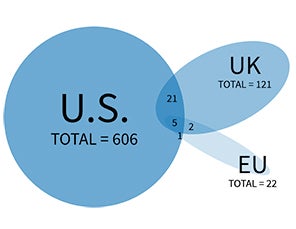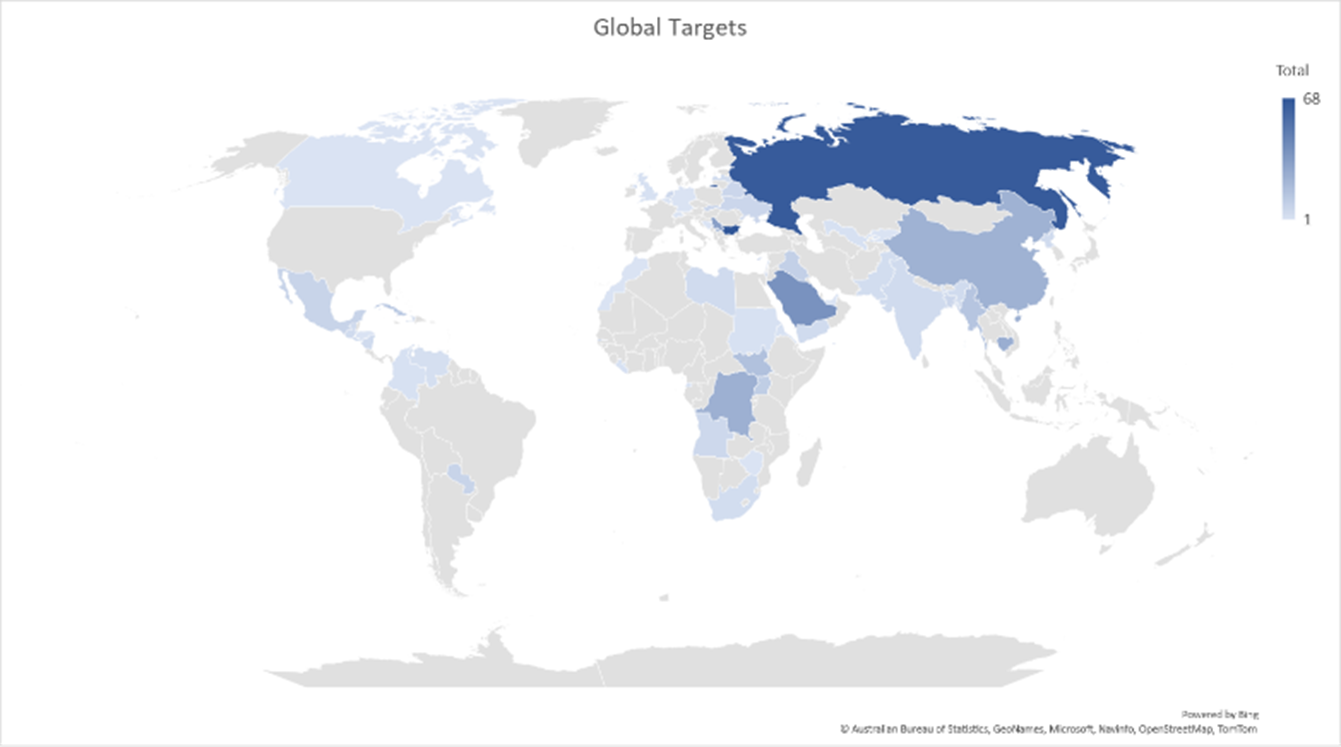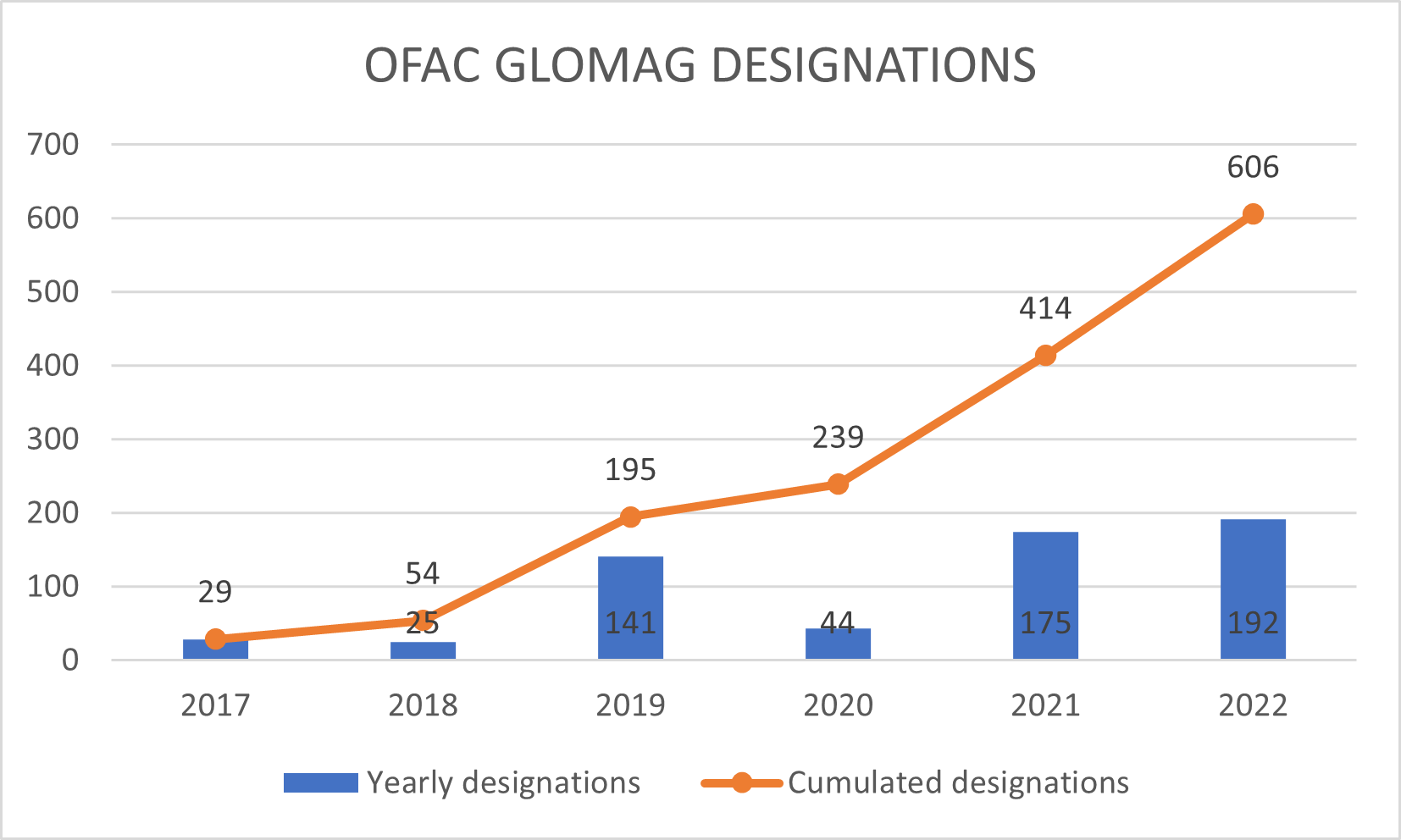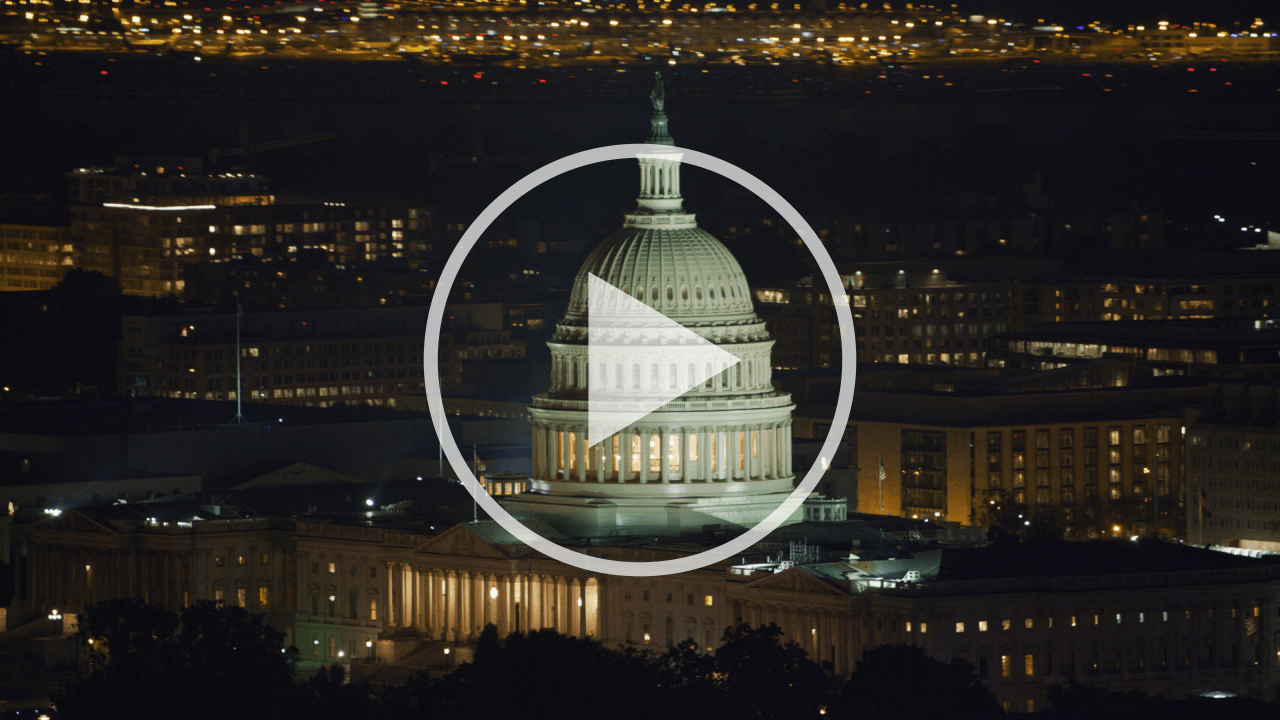Reflecting on the Global (Mis)alignment of Human Rights Sanctions

Combating human rights violations and corruption is a common goal among world powers. And with good reason. No civilized nation wants to appear to have ‘blood on its hands.’
Localized serious human rights violations have for a long time been a driver for the implementation of country-specific sanctions. However, with the Global Magnitsky Human Rights Accountability Act of 2016, the U.S. became the first major country to implement a global, thematic sanctions program aimed at protecting human rights and fighting corruption.
Localized serious human rights violations have for a long time been a driver for the implementation of country-specific sanctions. However, with the Global Magnitsky Human Rights Accountability Act of 2016, the U.S. became the first major country to implement a global, thematic sanctions program aimed at protecting human rights and fighting corruption.
Unlike traditional sanctions programs that focus on a particular country or region, the Global Magnitsky Act uses thematic sanctions to target serious human rights abuses and corruption. The Act is named after Russian tax lawyer, Sergei Magnitsky, who was detained, beaten, and subsequently died after exposing corruption by Russian officials.
Thematic sanctions were introduced as a response to terrorism, which is a threat that, despite hotspots, exists beyond national borders. The beauty of thematic sanctions is that they offer great latitude to apply sanctions to a specific issue wherever it occurs, without requiring a new legal instrument for each issue. Magnitsky-like sanctions are not intended to replace traditional geographic sanctions, but to complement those programs by providing governments with policy tools having a global reach, enabling them to respond quickly to global issues such as human rights abuses or grand corruption.
The UK, EU, Canada, Estonia, Lithuania and others have borrowed from the U.S. playbook and implemented their own “Magnitsky-like” sanctions, some even adopting the use of “Magnitsky.” More countries continue to follow suit. In December 2021, Australia amended its Autonomous Sanctions Act to include Magnitsky-like sanctions regulations that give the government the ability “to respond flexibly and swiftly to a range of situations of international concern.”1
Data gathered by LexisNexis® Risk Solutions as of the end of 2022 bears this out. Looking at the total of 749 records listed under human rights and corruption sanctions programs of the U.S., EU, and UK, roughly 3% of entries (24) are listed by two of the three regulators. And, less than 1% of entries (5) are listed by all three regulators. These numbers may come across as surprising, but illustrate a stark misalignment of targets for sanctions programs that seemingly pursue the same aims.
Thematic sanctions were introduced as a response to terrorism, which is a threat that, despite hotspots, exists beyond national borders. The beauty of thematic sanctions is that they offer great latitude to apply sanctions to a specific issue wherever it occurs, without requiring a new legal instrument for each issue. Magnitsky-like sanctions are not intended to replace traditional geographic sanctions, but to complement those programs by providing governments with policy tools having a global reach, enabling them to respond quickly to global issues such as human rights abuses or grand corruption.
The UK, EU, Canada, Estonia, Lithuania and others have borrowed from the U.S. playbook and implemented their own “Magnitsky-like” sanctions, some even adopting the use of “Magnitsky.” More countries continue to follow suit. In December 2021, Australia amended its Autonomous Sanctions Act to include Magnitsky-like sanctions regulations that give the government the ability “to respond flexibly and swiftly to a range of situations of international concern.”1
Exploring sanctions alignment and divergence
In spite of the absence of global human rights sanctions at the UN level, recent policy developments around the world suggest a shared objective among a number of like-minded countries of tackling human rights abuse and corruption – and a clear trend toward greater use of thematic sanctions to meet that goal. As such, we would expect to see a certain degree of alignment in the targets listed. In reality, however, the opposite is true – there is a notable level of divergence.Data gathered by LexisNexis® Risk Solutions as of the end of 2022 bears this out. Looking at the total of 749 records listed under human rights and corruption sanctions programs of the U.S., EU, and UK, roughly 3% of entries (24) are listed by two of the three regulators. And, less than 1% of entries (5) are listed by all three regulators. These numbers may come across as surprising, but illustrate a stark misalignment of targets for sanctions programs that seemingly pursue the same aims.

As we look into the actual targets of the EU, UK and U.S., the first interesting indicator is the total number of entries on each of the lists. At 606 total entries (entities, individuals, and vessels) representing more than 60 nationalities, the U.S. has more than 4 times as many entries on its OFAC Global Magnitsky Sanctions Program (GLOMAG) list than the UK and EU combined. This sizeable difference is influenced by both scope and timing.
Let’s first look at scope.
Let’s first look at scope.
The GLOMAG program in the U.S. and the UK programs encompass both human rights violations and corruption. The EU, on the other hand, only covers human rights abuses. The current EU Global Human Rights Sanctions Regime (GHRSR) does not consider “corruption in connection with human rights violations as an offense punishable by restrictive measures.”2 While discussions are underway to create a separate anti-corruption sanctions program or extend the scope of the existing GHRSR, no definitive action has been taken at this time to move it forward. The narrower scope of the EU list helps to account for fewer targets compared with the U.S. and UK.
Timing is another element that contributes to the sizeable difference in the number of entries on each list. The U.S. started its designations in 2017 – the earliest of the three regulators – so it stands to reason that it would have a greater number of entries. The UK introduced its Global Human Rights Sanctions Regulations in July 2020 followed by the Global Anti-Corruption Sanctions Regulations nine months later in April 2021. By contrast, the EU’s GHRSR was introduced in December 2020, with the first designation made in May 2021. And, as previously noted, it does not include corruption.
Regardless of differences in scope and timing, the lack of overlap in entries among the three regulators is still rather surprising. Although countries share the common goal of preventing human rights abuses and corruption, there is clearly wide variation on who or what entity to sanction.
Timing is another element that contributes to the sizeable difference in the number of entries on each list. The U.S. started its designations in 2017 – the earliest of the three regulators – so it stands to reason that it would have a greater number of entries. The UK introduced its Global Human Rights Sanctions Regulations in July 2020 followed by the Global Anti-Corruption Sanctions Regulations nine months later in April 2021. By contrast, the EU’s GHRSR was introduced in December 2020, with the first designation made in May 2021. And, as previously noted, it does not include corruption.
Regardless of differences in scope and timing, the lack of overlap in entries among the three regulators is still rather surprising. Although countries share the common goal of preventing human rights abuses and corruption, there is clearly wide variation on who or what entity to sanction.
Global issues, local sanctions exposure
With thematic sanctions becoming more widespread, entities wherever located run the risk of being exposed to a target of such global sanctions programs. Sanctioned targets can be located anywhere in the world – and may very well be right in “your backyard.”
U.S., UK, and EU global human rights and corruption sanctions include targets in every continent.
In 2021, OFAC's single largest set of designations did not relate to comprehensively sanctioned countries such as Iran, North Korea or Syria, but to a Bulgarian corruption network. Sixty-seven persons and entities were added to the SDN List that year.3
Bulgaria is not alone. GLOMAG sanctions are currently imposed on 92 targets located in seven EU countries, including Germany, Belgium and the Netherlands (15% of GLOMAG targets). Further, 325 targets can be found in nine of the G20 countries, accounting for 43% of the EU, U.S., and UK targets. Countries with reportedly a high level of corruption or with a poor record in human rights protection are unsurprisingly well represented. There are also country-specific sanctions programs that are sometimes used for these poor performers (e.g., Burma, Venezuela, Iran).
The broad range of nationalities represented on these major sanctions lists underscores the importance of acknowledging the global reach of thematic sanctions to tackle perpetrators of human rights violations and corruption regardless of the country of origin.
Bulgaria is not alone. GLOMAG sanctions are currently imposed on 92 targets located in seven EU countries, including Germany, Belgium and the Netherlands (15% of GLOMAG targets). Further, 325 targets can be found in nine of the G20 countries, accounting for 43% of the EU, U.S., and UK targets. Countries with reportedly a high level of corruption or with a poor record in human rights protection are unsurprisingly well represented. There are also country-specific sanctions programs that are sometimes used for these poor performers (e.g., Burma, Venezuela, Iran).
The broad range of nationalities represented on these major sanctions lists underscores the importance of acknowledging the global reach of thematic sanctions to tackle perpetrators of human rights violations and corruption regardless of the country of origin.

Looking ahead
Economic sanctions are a popular tool for governments and are being leveraged not only against particular countries, but also for addressing global issues. Unlike country or region-based sanctions, the addition of global, thematic sanctions programs such as human rights and corruption means no jurisdiction is immune to potential exposure.So, what does the future hold? If the GLOMAG program for U.S. designations is any guide, the future of human rights sanctions points to an upward trend in the use of these programs and entries and lists getting longer as programs mature. Since the beginning of the year we've continued to see more targets added to Magnitsky-like sanctions programs. The most significant changes occurred in the EU with 36 new entries related to actions of the Wagner group in Africa, gender-based violence, and internal repression in Russia. OFAC added 21 new entries and 5 for the UK. At the same time, recent indications from the U.S. Administration point to greater commitment to “incorporating multilateral cooperation where possible.”4 This would likely result in greater alignment on the lists of entities sanctioned under global human rights and corruption programs, through initiatives such as the recently announced OFAC-OFSI Enhanced Partnership5.
If the international community is truly serious about combating human rights abuses and corruption, then working toward greater alignment of sanctions among the U.S., UK, EU, and other like-minded countries is a key step toward a more effective response to those global issues. Since 2019, the U.S. seems to be using GLOMAG designations as a clear indication of such commitment, with landmark designations issued each December 10th, the International Human Rights Day6. This past December 10th was marked with the landmark designation by OFAC of a network of companies involved in illegal fishing through a fleet of more than 150 vessels. All of the companies were added to the SDN list, for a variety of abuses, notably the widespread use of forced labor. This action includes the designation of a NASDAQ-listed company, a first for OFAC7.
Financial institutions and international businesses are at the forefront to implement those sanctions. First, by ensuring effective sanctions compliance. However, they can go one step further by screening for enforcement information and negative news to proactively flag and implement a risk-based approach to entities that may be involved in human rights or corruption. Beyond the regulatory risks of dealing with sanctioned entities, organizations should also be mindful of the potential reputational and business implications of being associated with human rights abusers or corrupt entities.
1 https://sanctionsnews.bakermckenzie.com/australia-passes-magnitsky-style-thematic-sanctions-laws/
2 https://www.europarl.europa.eu/news/en/press-room/20210701IPR07516/human-rights-meps-want-corruption-punished-under-eu-sanctions-regime
3 https://home.treasury.gov/news/press-releases/jy0208
4 https://home.treasury.gov/system/files/136/Treasury-2021-sanctions-review.pdf
5 https://ofsi.blog.gov.uk/2022/10/17/ofac-ofsi-enhanced-partnership/
6 OFAC Human Rights and Anti-Corruption day designations:
2019: https://home.treasury.gov/news/press-releases/sm852
2020: https://home.treasury.gov/news/press-releases/sm1208
2021: https://home.treasury.gov/news/press-releases/jy0526
2022: https://home.treasury.gov/news/press-releases/jy1155
7 https://home.treasury.gov/news/press-releases/jy1154

